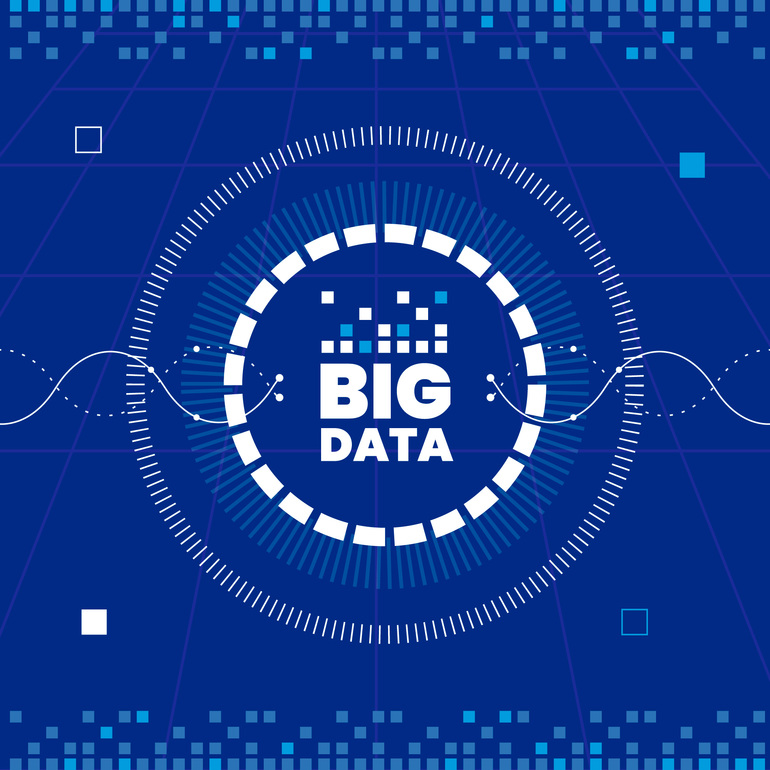On this occasion I tried to discuss what is Big Data Analytics and other information related to big data and analytics
Why does big data analysis become something that needs to be known by the accountant or company partner?
This is due to the enormous potential benefits gained if the accountant or the company can apply the analysis of big data. For those who want to know the important benefits of using big data analysis and other valuable information, you can continue to read this article to the end, because I will show you in the sub-chapter below.
For starters, to facilitate a basic understanding of what big data analysis is, I will start by discussing the definition of big data analytics
Understanding Big Data Analysis
To understand the definition of big data analysis, we cannot escape from understanding what big data is and what data analysis is. I have discussed the term big data specifically in the following article, but I will try to give a brief overview of big data here.
Big Data is a term to describe large data sets both Structured, Semi-Structured and Unstructured data. The definition of big data can also be explained in 3V:
- Volume means data sets that are stored in large numbers
- Velocity means there is a need to access the large data set quickly
- Variety means the data format that is increasingly varied at this time.
Here are three types of data formats:
- Structured data such as a relational database (RDBMS)
- Semi-Structured data such as XML, JSON
- Unstructured data such as documents, metadata, videos, images, audio, text files, ebooks, email messages, social media, journals etc.
Data analysis is the process of examining data to find hidden patterns, correlations that are not yet known, and other useful information.
Thus the notion of Big Data Analysis is the process of researching, processing large data sets (Big Data) to find hidden patterns, unknown correlations, market trends, customer preferences and other useful business information.
If you want to be more able to read from the following Wiki link: Big Data and Analytics, Need to focus more to be able to understand it;)
History and Evolution of Big Data Analysis
The concept of big data has been around for years, now most organizations understand that if they are able to accommodate all the large data sets that flow into their business, then they can apply the analysis and get the benefits / information that is very valuable from the analysis process.
If we look back before the term Big Data was known, in the 1950s businesses at that time had used conventional analysis, which was based on spreadsheets that were manually reviewed to reveal valuable information and trends.
Then what does big data analysis offer?
The benefits of big data analytics compared to conventional analysis are speed and efficiency.
Before the big data analysis application appears, businesses will collect data into data warehouses from enterprise databases such as Oracle, DB2, MS SQL Server, and then conduct analyzes to help make useful decisions for the company’s business future.
Constraints faced arise with the rapid growth of data from various types of data types, so that with conventional analysis there are limitations to being able to accommodate such large data sets, a relatively long time is needed to produce valuable information from the analytics
The emergence of big data analysis technology provides solutions for businesses to get immediate and even real-time analysis results, thus giving businesses an edge in competition.
Why is Big Data Analytics Important?
Big Data Analysis helps organizations utilize data and use it to identify new opportunities. Which in turn causes the business to move smarter and faster because it is supported by more efficient operations, which ultimately bring higher profits and of course customers are happier.
In a report written by Tom Davenport (Research Director of IIA) after he interviewed more than 50 businesses to understand how they use Big Data. He found them getting the following important benefits:
- Cost savings, Big data analysis technologies such as hadoop and cloud-based analysis bring significant cost reductions in terms of storing large amounts of data sets, in addition they can identify more efficient ways of doing business.
- Faster and better decision making, with the speed of big data technology such as Hadoop in conducting analysis combined with the ability to analyze a variety of new data sources, making businesses able to analyze information quickly and make decisions based on the results of the analytics
- Giving birth to new products and services, with the ability to measure the needs and satisfaction of customers brings the advantage of the business to create new products and services that are in accordance with the wants and needs of the customer.
With these 3 important benefits, it will help a business achieve its main goals / goals in increasing profits for the progress of its business.
Example of a Big Data Analysis Application
Here are some examples of applications offered by Big Data Companies in terms of analysis of big data:
- IBM Big Data Analytics
- Big Data HP
- SAP Big Data Analytics
- Microsoft Big Data Analytics
- Oracle Big Data Analytics
- Indium Software Big Data Analytics
- Teradata Big Data Analytics
- SAS Big Data Analytics
- Dell Big Data Analytics,
- Pentaho Big Data Analytics
- Amazon Web Service
- Google Big Query
- Big Data Pivotal
- Cloudera Enterprise Big Data
- Hortonworks Data Platform
Big data solutions offered generally use the Hadoop framework and several other supporting tools such as HBase, Pig, Hive, Mapreduce, Oozie, Zookeeper, HCatalog, Avro, Sqoop. Which allows users to store, manage and analyze data from various sources, where the data can be accessed by business analysts, data scientists and IT users / practitioners.
Those big data solutions are architecturally combined with technology that is used for data analysis and visualization purposes, such as Data Warehouse and Business Intelligence (BI). By using these visualization tools it will be more interesting and easier to provide reporting from the results of the analytics
It seems that later I will write a special article discussing details about the software mentioned above.
Example of a Case Study of Using Big Data Analytics
In its implementation, the application of big data analytics is suitable for various fields of business. In the following, I will try to list some examples of use case studies:
- Financial institutions can use big data analysis to quickly identify potential fraud before it becomes large in effect, thereby minimizing the risk of financial loss.
- Governments can use big data analysis to improve state security by being able to detect, prevent and fight cyber attacks.
- The healthcare industry can use big data analysis to improve patient care services and find better ways to manage resources and personnel.
- Telecommunications companies can utilize big data analysis to prevent customer churn, and also plan the best way to optimize both new and existing wireless networks.
- Marketing can use big data to do sentiment analysis to find out the level of customer satisfaction with the products and services being marketed.
- Insurance companies can use big data analysis to categorize insurance submissions that can be processed immediately, and which need to be validated by a visit by an insurance agent.
- Retail companies can use information from social media like Facebook, Twitter, Google+ stored with big data technology, which is then used to analyze how the behavior, customer perceptions of a product or brand of the company.
The above are just a few examples of the use of big data in the context of analytics I think there are many other examples.
In line with the continued development of big data analysis technology, and almost all businesses have begun to think that getting the benefits of the implementation of big data analysis is a necessity to face changes and competition that is increasingly fast and tight at this time.
Because of the above, we can predict the future of the application of big data into something common, so there will be more examples of big data utilization case studies other than those I mentioned.
How to do Big Data Analysis?
Here are some types of methods or techniques for conducting big data analysis:
- Text Analysis, is the process of analyzing text data (unstructured-data) such as blogs, emails, forums, tweets, forums and other forms.
- Data Mining, is a process of finding meaningful relationships, patterns, and trends of large data sets using pattern recognition techniques such as statistics and mathematics
- Machine Learning
- Predictive Analytics
- Statistic analysis
- NLP (Natural Language Processing)
Thus the discussion of big data analysis, hopefully can be useful.





